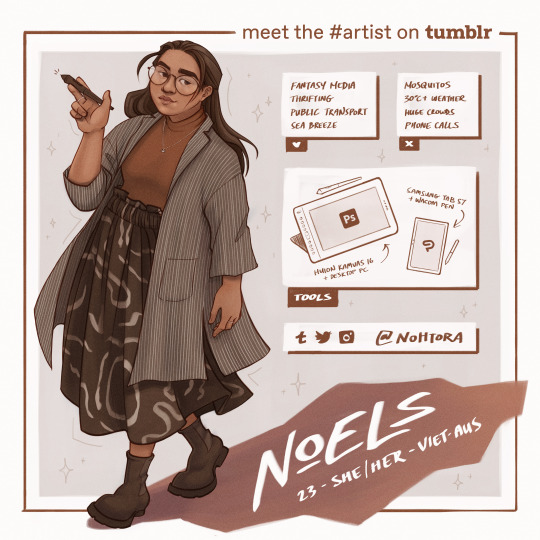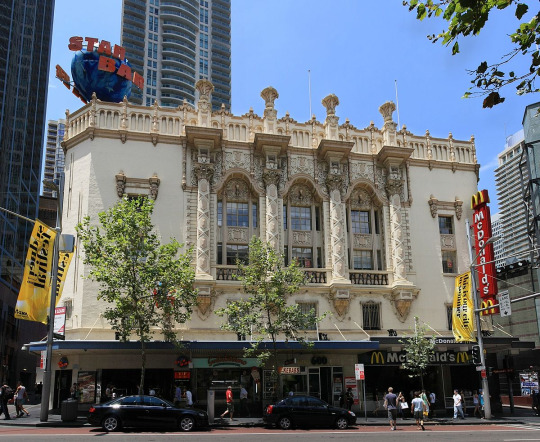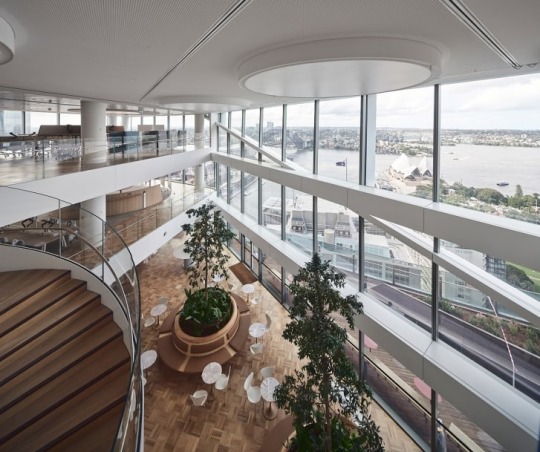#australian architects
Text







House in Flinders, Australia - Kennedy Nolan Architects
#Kennedy Nolan Architects#architecture#design#building#modern architecture#interiors#minimal#house#house design#modern house#beautiful home#coastal#views#timber cladding#green roof#australia#stone#dining room#garden#australian architecture
215 notes
·
View notes
Text

Carter Williamson Architects
Wurrungwuri, Sydney, 2022
#carter williamson architects#architecture#architectural design#contemporary architecture#home design#house design#australian architecture#residential architecture#dezeen#archdaily#architizer
56 notes
·
View notes
Text












Bara Bridge in Sydney, Australian
Architects: Sam Crawford Architects
Builder: Christie Civil
Photographer: Brett Boardman
#Bara Bridge in Sydney Australian#Sam Crawford Architects#architecture#modern#modern design#metal#metal sculpture
30 notes
·
View notes
Text
youtube
JJ House by Bokey Grant Architects.
#wooden floor#kitchen cabinet#kitchen#side yard#architecture#passageway#bungalow#house#contemporary house#australian house#sliding door#plant#stepping stone#plank floor#bokey grant architects#clinton weaver#Youtube
5 notes
·
View notes
Text
Living Room - Beach Style Living Room

Example of a beach style medium tone wood floor living room library design with a standard fireplace, a stone fireplace and a media wall
#architect#light filled spaces#australian beach house#building designer#renovation#alterations and additions
0 notes
Photo

Tile Patio
Inspiration for a mid-sized contemporary backyard tile patio remodel with a roof extension
#outdoor entertaining#home design#australian architect#brisbane architect#eco architect#entertainment area#eco-living
1 note
·
View note
Photo

Patio (Brisbane)
#Mid-sized trendy backyard tile patio fountain photo with a roof extension outdoor entertaining#lifestyle architect#home architecture#lifestyle design#renovation architect#australian architect#architect
1 note
·
View note
Text

Sri Lankan architect Geoffrey Bawa inspired the open spaces of this Australian seaside home on Queensland’s Sunshine Coast. Photo by @caitlinmillsphotography Interiors by @frankmacchia
Get Inspired, visit www.myhouseidea.com
#interior design#architecture#myhouseidea#home decor#decor home#kitchen#bedroom#houseidea#house idea#living
2K notes
·
View notes
Text

Meet the Artist: @nohtora
Heya! My name is Noels (she/her), a Vietnamese-Australian hobby artist based in Melbourne. By day, I'm an interior architect but I've always loved illustration & painting. Drawing fanart of my favourite fandoms gives me the most joy, fantasy & period media being what I favour most! I'm currently trying to draw more often (balancing work-life is hard!!) & challenging myself with new drawing methods. But when I'm not drawing, you can usually find me wandering around thrift shops looking for treasures. Pleasure to meet you all!
Nice to meet you, Noels! She has shared some of her work below for you all.



For more of Noels' work, be sure to check out her Tumblr, @nohtora!
2K notes
·
View notes
Text
when i went to sydney a few months ago i saw this maccas and LOST IT

it’s in a literal heritage building
#going there is so funny bc like the inner city has so many old fancy buildings that are just like. a kathmandu#so much sandstone. australian architects LOVE sandstone like its their baby#sydney#australia#i want to go there again just to go to the heritage site maccas
0 notes
Text
Brinkwhump Linkdump

I'm on tour with my new, nationally bestselling novel The Bezzle! Catch me in TUCSON (Mar 9-10), then San Francisco (Mar 13), Anaheim, and more!

Once again, I find myself arriving at the weekend with a giant backlog of links, triggering a linkump, the 15th such dumpage, a variety-pack of miscellany for your weekend. Here's the previous editions:
https://pluralistic.net/tag/linkdump/
Let's start with the latest incredible news from KPMG, the accounting and auditing giant that is relied upon as a source of ground truth for a truly terrifying share of the world's economy. KPMG has a well-deserved reputation for incompetence and corruption. They first came on my radar in 2001 when they sent a legal threat to a blogger for linking to their website without permission:
https://memex.craphound.com/2001/12/05/reason-4332442-not-to-ask/
The actual link was to KPMG's corporate anthem, which remains, to this day, a banger:
https://web.archive.org/web/20040428063826/http://chkpt.zdnet.com/chkpt/uknewsita/http://anthems.zdnet.co.uk/anthems/kpmg.mp3
Don't miss the DJ remixes (and the Nokia ringtone!) that the internet thoughtfully provided when KPMG decided that it didn't want the world to know about "Our Vision of Global Strategy":
https://web.archive.org/web/20011128153057/http://corporateanthems.raettig.org/
Now all this is objectively very funny, a relic of the old, good internet from one of its moments of glory, but KPMG? They were already enshittifying, even in 2001, and the enshittification only intensified thereafter. Nearly every accounting scandal of the past quarter-century has KPMG in it somewhere, from con-artists selling exhausted oil fields to rubes:
https://www.desmog.com/2021/06/03/miller-energy-kpmg-auditors-oil-fraud/
To killer nursing homes that hire KPMG to audit its books – and to advise it on how to defeat safety audits and murder your grandma:
https://pluralistic.net/2023/05/09/dingo-babysitter/#maybe-the-dingos-ate-your-nan
They're the architects of Microsoft's tax-evasion plot:
https://www.propublica.org/article/the-irs-decided-to-get-tough-against-microsoft-microsoft-got-tougher
And they were behind Canada's dysfunctional covid contact-tracing app, which never worked, but generated tens of millions in billings to the government of Canada, who used KPMG to hire programmers at $1,500/day, plus KPMG's 30% commission:
https://pluralistic.net/2023/01/31/mckinsey-and-canada/#comment-dit-beltway-bandits-en-canadien
KPMG's most bizarre scandal is literally stranger than fiction. The company bribed SEC personnel help its own accountants cheat on ethics exams. The corrupt officials were then given high-paid jobs at KPMG:
https://www.nysscpa.org/news/publications/the-trusted-professional/article/sec-probe-finds-kpmg-auditors-cheating-on-training-exams-061819
I mean it when I say this is stranger than fiction. I included it as a plot-point in my new finance crime novel The Bezzle (now a national bestseller!), and multiple readers have written to me since the book came out a couple weeks ago to say that they thought I was straining their credulity by making up such an outrageous scandal:
https://us.macmillan.com/books/9781250865878/thebezzle
But all of that is just scene-setting (and a gratuitous plug for my book) for the latest KPMG scandal, which is, possibly, the most KPMG scandal of all KPMG scandals. The Australian government hired KPMG to audit Paladin, a security contractor that oversees the asylum seekers the country locks up on one of its island gulags (yes, gulags, plural).
Ever since, Paladin has been the subject of a string of ghastly human rights scandals – the worst stuff imaginable, rape and torture and murder of adults and children. Paladin made AU423 million on this contract.
And here's the scandal: KPMG audited the wrong company. The Paladin that the Australia government paid KPMG to audit was based in Singapore. The Paladin that KPMG audited was a totally different company, based in Papua New Guinea, who already had a commercial relationship with KPMG. It was this colossal fuckup that led to the manifestly unfit Singaporean company getting nearly half a billion dollars in public funds:
https://www.theguardian.com/business/2024/feb/24/incredible-failure-kpmg-rejects-claims-it-assessed-the-wrong-company-before-423m-payment-to-paladin
KPMG denies this. KPMG denies everything, always. Like, they denied creating "power maps" of decision-makers in the Australian government to target with influence campaigns in order to win contracts like this one. Who knows, maybe, this one time, they're telling the truth? After all, the company whose employees gather to sing lyrics like these can't be all bad, right?
The time is now to lead the way,
We share the same the idea
That may win by the end of the day.
Our strength is here to stay.
Identity, one energy,
One strategy, with sympathy.
These are the words that will lead us into a new world.
https://everything2.com/title/KPMG+corporate+anthem
You may find it strange that I'm still carrying around the factoid that KPMG once threatened to crush a blogger for linking to its terrible corporate anthem, but that's just my "Memex Method," which helps me keep track of literally everything that seemed important to me through most of my adult life:
https://pluralistic.net/2021/05/09/the-memex-method/
One of my favorite quips from the very quotable Riley Quinn is that "leftists are cursed with object-permanence" – that is, we actually remember what just happened and use it to think about what's happening now. The Memex Method is object permanence for 20+ years worth of stuff. A lot of those deep archives never see use, but there's a surprising number of leading indicators buried in the stuff that happened in years gone by.
Take James Boyle's 2014, XKCD-style comic about the experience of driving a notional Apple car:
https://www.thepublicdomain.org/2014/11/07/apple-updates-a-comic/
Apple, it turns out, spent the next decade working on just such a car, and while that car has now been canceled, Boyle's comic correctly anticipates so much about the trajectory Apple's products took. It's uncannily accurate – real "don't invent the torment nexus"/"cyberpunk was a warning, not a suggestion" stuff:
https://knowyourmeme.com/memes/torment-nexus
But no matter how many times we insist that the torment nexus shouldn't be created, the boardrooms of end-stage capitalism continue to invent them. Take HP, the poster-child for enshittification, edging out even KPMG in the race to turn everything into a pile of shit. After years of tormenting people to punish them for wanting to print things, HP has announced a new service that so mustache-twirlingly evil that it lacks verisimilitude:
https://arstechnica.com/gadgets/2024/02/hp-wants-you-to-pay-up-to-36-month-to-rent-a-printer-that-it-monitors/
Here's the pitch: HP will sell you a printer that you don't own. In addition to paying a monthly fee for your ink – which you pay no matter whether you print or not – you will also pay a monthly fee just for having HP's printer on your premises. You are absolutely, positively forbidden from using third-party ink in this printer, and must use HP's own ink, which sells for about $10,000/gallon.
But while you aren't allowed to use this printer in ways that are bad for HP's shareholders, HP is absolutely free to use the printer in ways that are bad for you. When you click through the signup agreement, you grand HP permission to surveil every document you print – and your home wifi network more generally – and to sell that data to anyone and everyone.
What's more, HP reserves the right to discipline you with punitive credit-card charges if you disconnect this printer from the internet, on the basis that doing so makes it harder for them to spy on your printer.
I'm sorry, this is just more torment nexus shit, the kind of thing you'd expect to drop on Apr 1, not Feb 29, but I guess this is where we are. I can only conjecture as to whether HP's businesses strategists are directly taking direction from my novella "Unauthorized Bread," or whether they're learning about it second-hand from a KPMG consultant who converted it to Powerpoint form and charged $1,500/day for the work:
https://arstechnica.com/gaming/2020/01/unauthorized-bread-a-near-future-tale-of-refugees-and-sinister-iot-appliances/
All of this cartoonish villainry is the totally foreseeable consequence of a culture of impunity, in which companies like HP and KPMG can rob, cheat, steal (and sometimes even kill) without consequence. This impunity is so pervasive that the exceptions – where a rich criminal faces real consequences – become touchstones: Enron, Arthur Anderson, Theranos, and, of course, FTX.
FTX was arguably the largest-scale corporate crime in world history, stealing more than $10 billion dollars, mostly from rubes sucked in by hype and Superbowl ads. When news that FTX founder and owner Sam Bankman-Fried was convicted of fraud and was in for a lengthy prison sentence made a huge stir, because criminals like SBF usually walk away from the wreckage with their hands in their pockets, whistling a jaunty tune.
One of the very best commentators on cryptocurrency scams generally and FTX/SBF in particular is Molly White, whose Web3 is Going Just Great feed is utterly indispensable. White's newsletter, "Citation Needed," dives deep into the wrangle of SBF's sentencing:
https://www.citationneeded.news/issue-52/
Bankman-Fried's parents – prominent law professors at top law schools – helped brief the court this week on their son's punishment. According to them, SBF faces 100 years in prison, but should be sentenced to 5.5-6.5 years at the most. Why? Because he is a vegan, who is not greedy, and feels remorse, and cares for individuals (recall that SBF presented himself as the avatar of the batshit "effective altruism" philosophy while privately admitting that he used this as a smokescreen).
The most bizarre note in the 100-page filing is SBF's mother declaring that her son is an "angel of mercy," apparently unaware of the grisly meaning of that term:
https://en.wikipedia.org/wiki/Angel_of_mercy_(criminology)
America's prisons are a travesty and I wouldn't wish them on anyone, but that's not the argument SBF's parents are making; rather, they're arguing that their special boy doesn't deserve the treatment America metes out to poorer, less white people who merely steal hundreds or thousands of dollars. A crook who steals ten billion should be handled the way a casino handles a whale – with concierge service.
The problem is, there are so many of these remorseless, relentless crooks that there's no way we could scale up that white-glove treatment when we finally round 'em all up and make them pay. Writing for The American Prospect, Maureen Tkacik tells us about the ransomware attack that shut down America's pharmacy system last month:
https://prospect.org/health/2024-03-01-zoomer-hackers-shut-down-unitedhealthcare/
The attack brought down Change Healthcare, part of the monopolist Unitedhealth, which serves as the "pharmacy benefit manager" to a vast swathe of American pharmacies. PBM is one of those all-American finance scams, a middleman garlanded with performative complexity put there to make you feel stupid for asking why independent pharmacies all have to pay rent to this malicious, unaccountable – and now, manifestly incompetent – gang of crooks.
Tkacik's breakdown of this scam – and how it rendered Americans' ability to get the drugs they depend on to go on breathing – is characteristically brilliant. Tcacik is fast emerging as my favorite Explainer of Scams, a print version of John Oliver or Adam Conover. You may recall her work from my post last week on how private equity has taken a wrecking ball to America's hospitals:
https://pluralistic.net/2024/02/28/5000-bats/#charnel-house
I always try to finish these linkdumps with some upbeat news to carry you through the weekend, and this week brought two genuinely wonderful – and totally underreported – pieces of amazing news.
The first is that Starbucks has sued for peace in the war against its workers' unions. Hundreds of Starbucks stores have unionized in recent years, but not one of them had a contract. Instead, Starbucks had waged dirty war on their own workers, from denying gender-affirming care to unionized employees to simply shutting down whole stores after they voted to unionize:
https://www.cnbc.com/2022/06/14/starbucks-union-company-threatens-that-unionizing-could-jeopardize-gender-affirming-health-care.html
But the workers held fast and after years of this, Starbucks has caved, promising contracts for all unionized stores and an end to its campaign of terror against workers seeking to unionize more of its stores. In a postmortem for Jacobin, Eric Blanc rounds up "seven lessons from Starbucks workers' historic victory":
https://jacobin.com/2024/02/starbucks-sbwu-contract-bargaining/
This is the kind of listicle I can get behind. According to Blanc, the Starbucks unions won by deploying worker-to-worker organizing, a tactic that many of the new unions that are shaking up formerly impossible-to-organize jobsites are using (Blanc has a book about this coming from UC Press called "We Are the Union: How Worker-to-Worker Unionism Can Transform America," so he should know).
Other tactics that made the difference for Starbucks unions: new digital training and support tools and partnering with established unions for support and infrastructure. Blanc also calls out the success of "salting" – the venerable but largely disused tactic of union organizers applying for a job at a non-union shop in order to organize it.
Blanc also mentions government policy, including the outstanding work of NLRB general counsel Jennifer Abruzzo, a shrewd and committed tactician whose understanding of the technicalities of labor law have let her push for bold measures. For example, in Thrive Pet Care, Abruzzo is arguing that when a company refuses to bargain in good faith for a contract with its union, she can step in and order them to honor the terms of a contract at comparable unionized competitors until they produce a contract of their own:
https://pluralistic.net/2023/09/06/goons-ginks-and-company-finks/#if-blood-be-the-price-of-your-cursed-wealth
Abruzzo is one of several smart, competent tacticians in the Biden administration who are working to kneecap corporate power. Another is Rohit Chopra, chair of the Consumer Finance Protection Bureau, who just announced another bold, important initiative that will help Americans fight corporate corruption and get a fair deal:
https://prospect.org/economy/2024-03-01-public-option-credit-card-shopping/
Chopra is taking aim at credit-card comparison sites that purport to show you where you can get the best deal. If you're an affluent person who doesn't carry a balance, this might not matter to you, but if you're an average working stiff, high interest rates can gobble up a massive share of your paycheck. What's more, credit card margins are higher than they have ever been:
https://www.consumerfinance.gov/about-us/blog/credit-card-interest-rate-margins-at-all-time-high/
The most expensive credit cards come from the big, monopolistic banks, but you wouldn't know it from the leaderboards produced by Credit Karma, NerdWallet, LendingTree, and Bankrate. All of these sites take bribes from the big banks to list their credit cards above those offered by credit unions – who are typically 10% cheaper than the big banks' cards.
The new CFPB rule prohibits this fraudulent ranking, but the Bureau is going even further. They're using their administrative powers to force banks to report their rates to the Bureau, which will publish them on a publicly funded, neutral website – what David Dayen calls "a public option" for shopping for credit cards.
This policy makes a perfect bookend to the last CFPB initiative I wrote about here: a rule that forces banks to allow you to transfer your account to a rival with a couple of simple clicks, importing all your history, payees, and everything else you need to switch to a better bank:
https://pluralistic.net/2023/10/21/let-my-dollars-go/#personal-financial-data-rights
Combine that ease of switching with reliable information on which banks will give you the best deal and you get something that will directly transfer millions and millions of dollars from giant, wildly profitable banks to low-income people who've been tricked into paying them punitive interest rates.
So that's it, this week's linkdump. I promised you I'd end on a high note, and I did it. The world may be full of all kinds of terrible things, but workers and regulators are scoring big, muscular victories in battles where the stakes are real and important. Have a great weekend – we've earned it.
And remember!
The time is now to lead the way,
We share the same the idea
That may win by the end of the day.
Our strength is here to stay.
Identity, one energy,
One strategy, with sympathy.
These are the words that will lead us into a new world.

If you'd like an essay-formatted version of this post to read or share, here's a link to it on pluralistic.net, my surveillance-free, ad-free, tracker-free blog:
https://pluralistic.net/2024/03/02/macedoine/#the-public-option

Image:
Stacy (modified)
https://www.flickr.com/photos/notahipster/4402860361/
CC BY 2.0
https://creativecommons.org/licenses/by/2.0/
#pluralistic#paladin#kpmg#audits#incompetence#molly white#sam bankman-fried#ftx#crypto#cryptocurrency#fraud#maureen tcacik#ransomware#pharma#pharmacy benefit managers#intermediaries#middlemen#starbucks#labor#unions#cfpb#bribery#corruption#finance#hp#printers#enshittification#iot#unauthorized bread#james boyle
75 notes
·
View notes
Text

Richard Kirk Architect
Sir Llew Edward building, University of Queensland, Australia, 2008
#richard kirk architect#richard kirk#architecture#australian architecture#dezeen#archdaily#architizer#contemporary architecture#architectural design
21 notes
·
View notes
Text
In 2014, the Australian firm AMP Capital launched a bold and bizarre call to action to the architectural community of Sydney—replace their skyscraper headquarters without demolishing it.
They wanted their AMP Center, the once-tallest building in Sydney, to become the world’s first “upcycled skyscraper,” and the results were truly inspirational.
By grating a second tower onto the existing core of the AMP Center and not demolishing it, 12,000 tons of CO2 were saved which would have otherwise been created through the use of heavy machinery and the loss of carbon captured in the cement. 12,000 tons is equal to 3 years of the 49-story tower’s maximum energy consumption.
Built in the 1970s, the AMP Center wasn’t necessarily on its last legs, but wasn’t viable for the company any longer. But the firm was unwilling to commit to the massive costs of carbon and money when another option was available.
First though, sufficiently bold architects were needed for the project. Three firms teamed up, led by Danish architects 3XN, an Engineering company called Arup, and the Australian architects BVN.
“The tower was coming to the end of the end of its life, in terms of viability… but the structure and the ‘bones’ can actually last a lot longer,” said Fred Holt from 3XN in a video interview. “You can’t always retain everything. But if you can retain the structure—and that’s where the majority of your embodied carbon is—then you’re lowering your footprint.”
At first it was unclear how much of the original structure would be saved. Beginning on the project, the team realized the original tower was actually about 4 meters shorter than the original drawings suggested.

They installed hundreds of sensors to track the tiniest of movements to ensure that by aligning their new construction with the old one, there wouldn’t be any surprises waiting for them at key moments.
In short, the build was a huge success, and the architects boast that walking from the new construction into the old tower is an unnoticeable transition.
Five stacked units with sharp points twist up toward the sky, while an envelope covers both the new extension and the old tower such that no one could tell the difference. Office space was expanded from 4,500 to 9,000 personnel, and the lack of demolition saved AMP around AUD$150 million.
The Quay Quarter Tower, as it’s called, won World Building of the Year upon its opening late in 2022. 3XN hopes it serves as a case study for the future potential in upcycling towers.
-via Good News Network, 5/1/23
#australia#sustainable architecture#sustainability#architecture#green architecture#upcycling#concrete#carbon emissions#upcycle#skyscraper#solarpunk#good news#hope
290 notes
·
View notes
Note
Could we get some parental Percy and Ramsey? If not that’s fine



PARENTAL PERCY + RAMSEY HEADCANONS
synopsis… Percy and Ramsey as your parents
ft. Percival “Percy” King, Ramsey Murdoch, Howie Honeyglow (mentioned), Meryl Lockhart (mentioned), Sergeant Eros (mentioned)
tags… parental imagine, Percy and Ramsey’s relationship is unspecified, goofy family shenanigans, some anime campaign references but no spoilers, relationship study
word count… 702
a/n… I FINALLY GOT MY WRITING SPOONS BACK BAYBEYYYYYY. Apologies for the long hiatus, but I hope you all enjoy these imagines! ✧ 🦄

𓆩ꨄ︎𓆪 Even if Ramsey is your actual father, he still gets treated at least a little bit like a weird uncle that the rest of the family doesn’t want you associating with.
𓆩ꨄ︎𓆪 Despite some general banter, Percy trusts Ramsey with your care quite a lot after he helped her in Redwood Run, and is always fair and never presumptuous. She has quite a few ground rules, some of them a bit odd, but never unfair.
“Uhhh….Percy?” Ramsey’s confusion was met by the policewoman’s polite smile.
“Yes? Is there something you’d like to ask me about the rules?”
A nod. “Just one thing.” Despite the fact that she couldn’t see what he was pointing to, the Australian pointed to one of the lines with his index finger. “I think ‘no crayons of debauchery’ is a bit unnecessary.”
𓆩ꨄ︎𓆪 Your time between the two is divvied up almost perfectly evenly, as expected of Percy’s scheduling. Sometimes, Ramsey can even go somewhere with you as long as an officer (typically Percy) accompanies you.
𓆩ꨄ︎𓆪 On occasion, you’ll also get ‘babysat’ by Meryl or Sergeant Eros when both your parents are unavailable. Meryl can be a bit…jumpy, but typically well meaning. And Eros will let you ride shotgun if he takes you to work with him (given that the work is appropriate and something you can tag along for).
𓆩ꨄ︎𓆪 Ramsey makes drawings of your OCs and Percy hangs them on her fridge. It’s kind of comical to see your fursona or the like hung up in her otherwise rather plain kitchen, but it’s also a sweet reminder of how she’s invested in your interests.
“I must admit, I am curious.” You perked your head up at the sound of your mother’s voice, watching as she admired one of the papers hung up with a magnet on her fridge. When she was done examining the drawing like it was some sort of specimen, she’d stand up to her full height and look your way. “Why am I drawn as a beaver in this picture?”
“Oh,” you explained between bites of food, “I always thought if you were an animal, that’s what you’d be, because you make all kinds of buildings when you’re working.”
This answer seemed to leave her pleased, almost glowing in response to your perception of her. With a hand over her heart, she spoke in a calm voice. “Ah, the beaver. Truly an industrious creature. Nature’s architect, presiding over the flowing waters, arbiting their path….”
….Well, that probably meant she was happy about the fursona you came up for her.
𓆩ꨄ︎𓆪 I wouldn’t call Percy overprotective per se, but she is very cautious. Like if you want to ride a bike, she’ll make sure you have a helmet, knee pads, elbow pads, shoulder pads….overall, just makes sure to take all possible safety measures in a situation. She’ll never stop you from doing something you want to do within reason, she’ll just make sure she’s there to keep an eye on you.
𓆩ꨄ︎𓆪 You’ve also likely met Howie once or twice because he’s a good friend (slash business rival) of Percy’s. He gave you a honeyed snack once. It tasted good, but the texture is…..questionable.
𓆩ꨄ︎𓆪 Despite Percy being classic lawful good, Ramsey can actually be the more reasonable one, aka having more common sense in a situation. Sometimes, parent-child bonding is just being surrounded by wackiness while both expressing complete and utter exasperation.
“Hey dad, do you know what is happening right now at all?” You loved your mother to death, but her idea of a ‘fun activity’ could often be rather strange. Like now, where she was currently trying to enforce road safety laws to the Mario Kart CPUs. While losing.
All the man could do was shake his head and crack a grin. “Eh, just roll with it, kiddo. You get used to it after a while.”
𓆩ꨄ︎𓆪 They both give headpats, but Percy’s are a sort of stiff “pat pat” while Ramsey’s is more of a noogie that messes up your hair. You don’t have the heart to say either one is better than the other, though.
𓆩ꨄ︎𓆪 They’re both wonderful, really. Both a little weird, but that’s part of what makes your family so great.
#𓆩ꨄ︎𓆪 request !#🦄's writings#epithet erased imagines#epithet erased#epithet erased x reader#ramsey murdoch imagines#Ramsey Murdoch#percival king#Percival king imagines#familial imagines
51 notes
·
View notes
Text

Australian Embassy, Paris, 1975-77.
Architect: Harry Seidler & Associates
Photography: Max Dupain
#architecture#modernism#brutalism#art#photography#Harry Seidler#Australian Embassy#Max Dupain#Paris#France#1970s
90 notes
·
View notes
Text








Dorrit Black (1891 - 1951), Australian
Dorrit Black was born in the Adelaide suburb of Burnside, the daughter of engineer and architect Alfred Barham Black and Jessie Howard Clark, an amateur artist and daughter of John Howard Clark, editor of the South Australian Register. She attended the South Australian School of Arts and Crafts in about 1909, working in watercolours, and attended the Julian Ashton Art School in Sydney in 1915, concentrating on working in oils.
In 1927, Black went by herself to London and attended the Grosvenor School of Modern Art, where she experimented with colour linocut printing while studying under Claude Flight. Black was influenced by Flight to use bold geometrical patterns and harmonious colour schemes. In 1928, she studied at André Lhote's Academy in Paris. Black was influenced by Lhote's "compostional principles of geometric order". In 1929, she briefly worked with Albert Gleizes.
Black was strongly influenced by the Modernist and Cubist art movements she was exposed to in London and Paris. By the time she returned to her home country in late 1929, Black had become an active proponent of the Cubist style, and brought the styles back to Australia with her. Black then held an exhibition at Macquarie Galleries in Sydney in 1930. This was one of six one-woman shows which were to feature her work.
23 notes
·
View notes